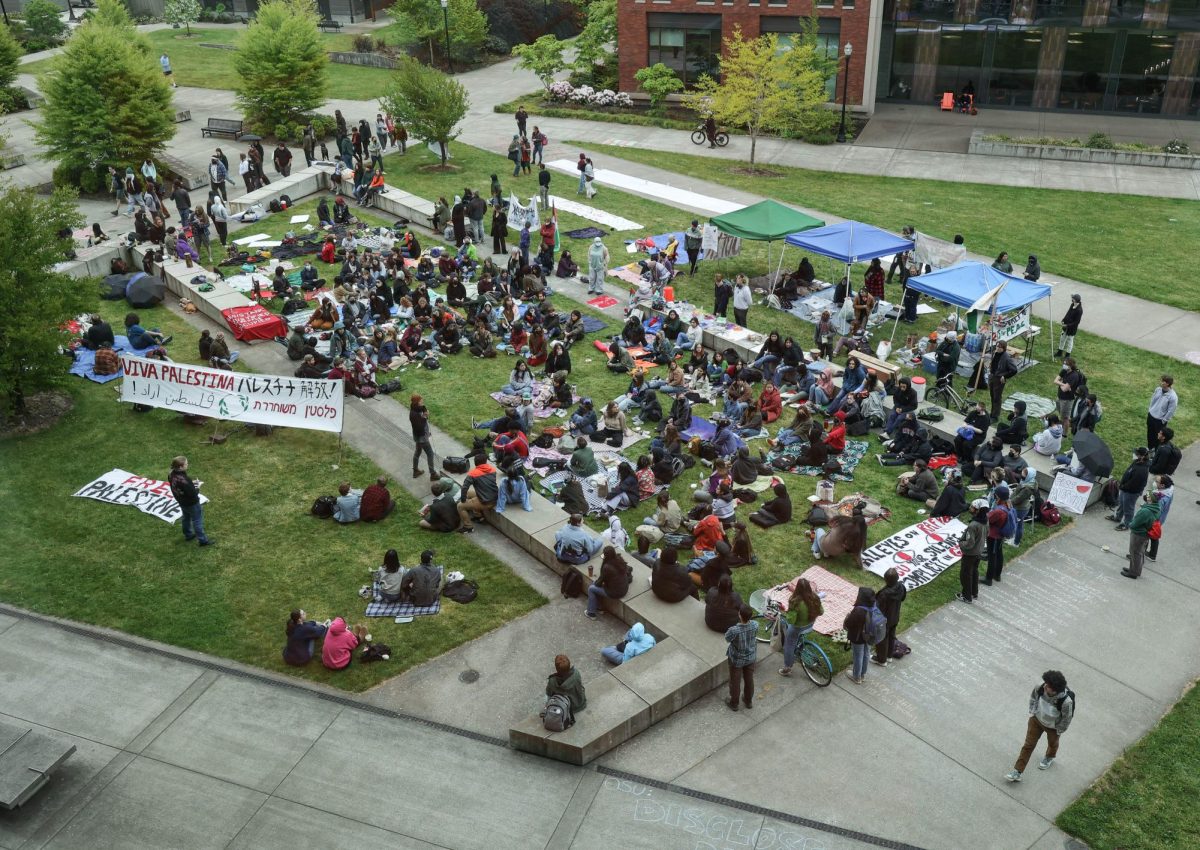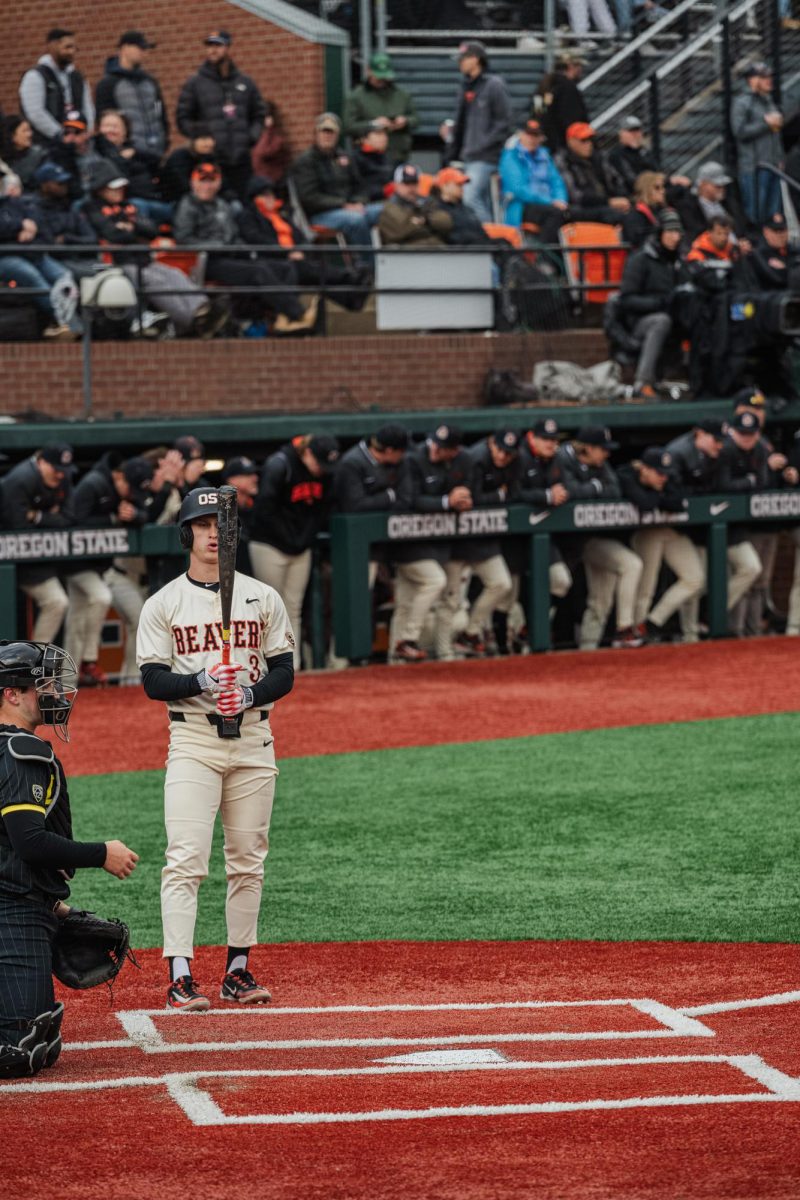As an influx of new houses and apartments enter the Corvallis housing market and leases will end come June, returning students are scrambling to find off-campus housing.
Housing market prices are increasing dramatically across the United States, and Corvallis is no exception.
According to the Department of Land Conservation and Development rankings, Corvallis is the most rent-burdened community in Oregon.
Students living off campus are some of the main people feeling the effects of the rent increase.
Carisa Womack-Hakala, a third-year ecological engineering student, has been struggling financially due to the rent increase.
She lives in an apartment with her boyfriend and works part-time while in school full-time.
Womack-Hakala finds it difficult to work enough hours to save the amount of money to move out of her current apartment.
The shift in rent prices happened during 2020 amidst the COVID-19 pandemic, and the increase was sudden, mostly for workers who went 100% remote, according to Paul Bilotta, community development director for Corvallis.
Remote workers began to move to “nicer” or cheaper places to live in Corvallis. It created a rapid increase in demand for housing in high amenity and low-cost areas.
“Corvallis is a great place to settle down for remote work,” Bilotta said. “This puts a new category of community members competing in the market, and many could be coming from more expensive areas and therefore have no problem bidding up local rental rates.”
There are local reasons that make Corvallis more vulnerable to increases in housing cost.
In the 1970s, some Corvallis community members wanted to slow population growth and introduced a number of regulatory reforms to slow the population growth of the city, according to Bilotta.
At first the suppression of growth was not very noticeable, because there was still a lot of vacant land available for development. However, by the end of the 1990s, the pre-1970 vacant land was being used up and began to become very scarce.
In the late 1990s, the city largely ran out of high-density residential property which is what produces the most efficient apartment developments. There was no significant effort to replace the lost inventory for about two decades. The city council did a city-wide analysis and rezoned a number of properties to high-density residential zoning.
In terms of aid, Bilotta said the city has been systematically adopting its recommended changes and has almost completed all of them. Since 2015, the city council has aimed to support housing creation in Corvallis, becoming one of their top priorities.
Some of the aid includes the rezoning of a large amount of new high density residential land for apartment creation.
Another is the creation of an Affordable Housing Construction Excise Tax to fund new affordable housing development, Corvallis being the second city in the state to do that.
“While being full time and working part time, I can’t really save money to move out, so I have to stay in my apartment as the rent increases,” Womack-Hakala said.
Due to financial stress, Womack-Hakala said she is forced to move from a full-time student to a part-time student to work more hours and save money.
Another student Benjamin Shingledecker, a second-year media communications major, expressed concern about the rent on and off campus. He currently is living in a house with multiple roommates.
According to Shingledecker, the rent split between them is bearable, however his paycheck cuts it close. It’s bi-monthly and he’s paid the same day rent is due.
Shingledecker said that two of his friends, who are living in an apartment, are paying $1,000 monthly for a place with dorm room sized rooms with little to no space, which he believes is not worth the cost.
“I’m thankful enough to be in this position where it didn’t affect me extremely, but I know there are a lot of students that can only afford their first year in the dorm and then they are stuck,” Shingledecker said.
The Vina Moses Center serves the community of Benton County by helping people through times of hardship, engaging the community to build resilience and improve wellbeing, according to Jade True, program coordinator at the VMC.
True said it’s part of the center’s goals to help people with the rent price increase, deposits and late fees. While the center works within a limited budget, they get help with these requests from private donors and from other nonprofits who work in a network with the intent to help each other.
True said they have seen an increase of students coming to them for help with rent, food or clothing. A huge number of these students are international students. Many of them bring their families to the states and some are unable to work at first.
“It is unfair for people who are essentially kids to shoulder all of this financial burden on top of trying to learn, it’s kind of crazy to expect an 18-year-old to spend all of this money just to keep a roof over their head,” True said.
True believes the school needs to make on-campus housing cheaper so non-students aren’t fighting the students for places to live.
The “fighting” for housing comes from the fact that landlords will sometimes pick students over others. Students don’t have much of a choice in housing and can find roommates to help pay rent, True said.
“The community is forced to carry the burden of supporting the students since the school can’t,” True said.


















































































































